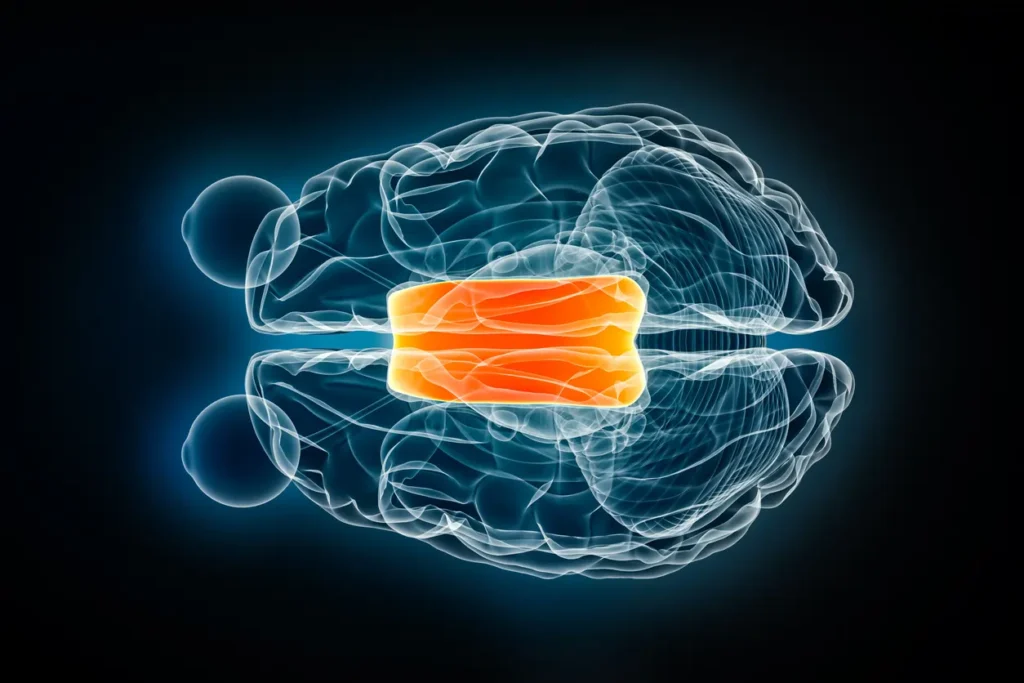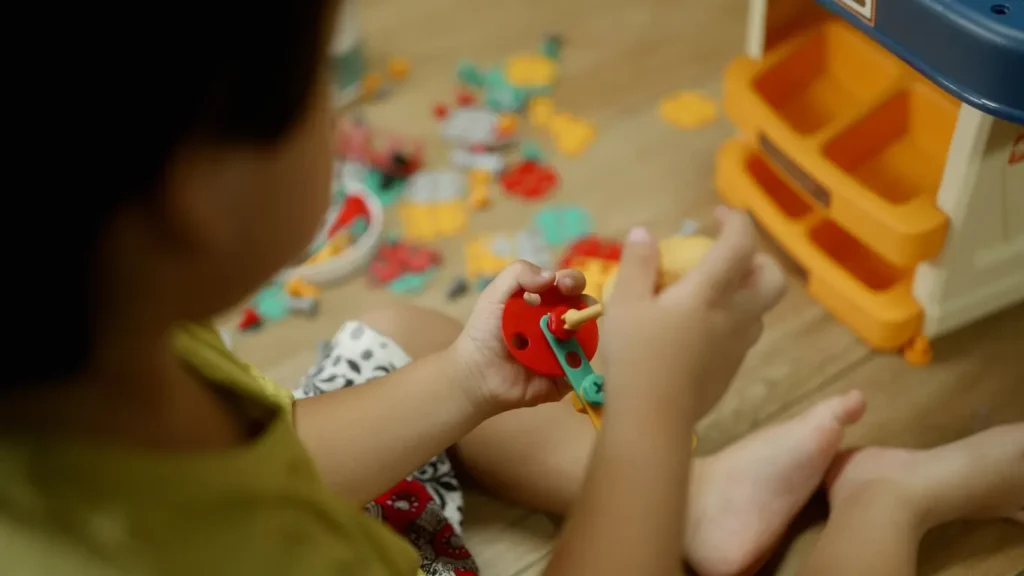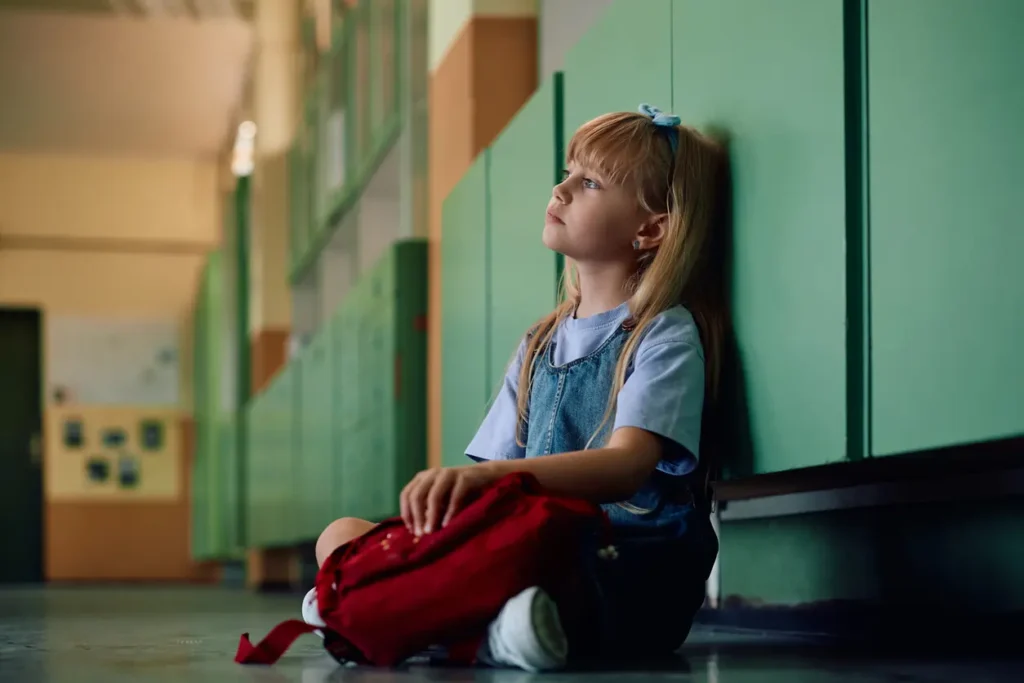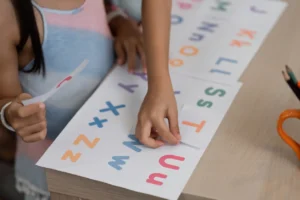
Story at-a-glance
- Bilateral integration is the brain’s ability to coordinate both sides of the body, essential for activities from tying shoes to reading and writing
- The corpus callosum, the bridge connecting the brain’s hemispheres, facilitates communication for efficient bilateral movement and learning
- Children with bilateral integration challenges often struggle with reading (tracking across pages), writing (crossing midline), sports, and self-care tasks
- Warning signs include avoiding midline-crossing activities, switching hands for tasks, poor coordination, and difficulty with reading tracking
- Bilateral integration issues frequently co-occur with dyslexia, ADHD, developmental coordination disorder, and sensory processing disorders
- Evidence-based interventions include therapeutic approaches, movement programs, classroom accommodations, and home-based activities
- Simple home activities like cross-lateral movements, bilateral crafts, and playground activities can significantly improve bilateral skills
- Addressing bilateral integration can unlock learning potential by establishing neurological foundations that support academic success
When children struggle with learning or coordination, parents and educators often focus on specific academic or motor skills. However, a fundamental neurological process called bilateral integration—the ability to coordinate both sides of the body and brain—may be the underlying factor affecting these challenges. Children with poor bilateral integration often struggle with seemingly unrelated tasks, from reading and writing to sports and daily self-care activities. Understanding this critical developmental function offers a new perspective on supporting children with learning and coordination difficulties.
Understanding Bilateral Integration: The Foundation of Coordinated Function
Bilateral integration refers to the brain’s ability to coordinate both sides of the body while also sharing information efficiently between the left and right hemispheres of the brain.
The Neurology of Bilateral Coordination
The human brain has two hemispheres connected by a thick band of nerve fibers called the corpus callosum:
The Corpus Callosum: This superhighway of approximately 200-250 million nerve fibers allows the two hemispheres to communicate and coordinate activity. It develops significantly during childhood, with particular growth spurts between ages 3-6 and again in early adolescence.
Hemisphere Specialization: While both hemispheres participate in most functions, each has specializations:
- Left hemisphere: Often more involved in sequential processing, language, logical analysis, and details
- Right hemisphere: Often more involved in spatial awareness, emotional processing, big-picture thinking, and creative functions
Motor Control Pathways: Each hemisphere primarily controls the opposite side of the body (contralateral control), though some motor functions involve same-side (ipsilateral) control.
Dr. Carla Hannaford, neurophysiologist and author of “Smart Moves,” explains: “The corpus callosum is our brain’s primary integration zone. When children have insufficient development or use of this critical structure, we see a cascade of effects on learning and coordination.”
Types of Bilateral Skills
Bilateral coordination encompasses several distinct skills that develop sequentially:
Bilateral Awareness: The ability to be conscious of both sides of the body and understand the body’s midline.
Symmetrical Bilateral Coordination: Using both sides of the body to perform the same action simultaneously (like jumping with both feet or clapping hands).
Reciprocal Bilateral Coordination: Using both sides of the body in an alternating, coordinated fashion (like walking, running, or climbing).
Asymmetrical Bilateral Coordination: Using both sides of the body to perform different but complementary actions (like holding paper with one hand while writing with the other).
Crossing the Midline: The ability to cross the invisible line dividing the body’s left and right sides with limbs or eyes (like reaching across the body to grab an object or tracking visually from left to right across a page).
Research published in Developmental Medicine & Child Neurology shows that these skills typically develop in sequence, with proficiency in earlier skills supporting the development of more complex bilateral abilities.
The Developmental Timeline of Bilateral Integration
Bilateral integration develops progressively throughout childhood:
Infancy (0-12 months):
- Development begins with reflexive movements
- Gradual emergence of symmetrical movements (reaching with both hands)
- Beginning awareness of body symmetry
Toddlers (1-3 years):
- Increasing reciprocal movements (alternating feet on stairs)
- Early midline crossing (reaching across body)
- Emerging hand preference but still frequent use of both hands
Preschool (3-5 years):
- More refined symmetrical movements (jumping jacks)
- Improved reciprocal coordination (alternate arm movements)
- Increased midline crossing abilities
Early Elementary (5-8 years):
- Establishment of hand dominance
- More complex asymmetrical coordination (holding paper while writing)
- Refined midline crossing during academic and play activities
Later Elementary and Beyond (8+ years):
- Integration of bilateral skills into complex academic and athletic tasks
- Automatic bilateral coordination for most activities
- Development of specialized bilateral skills for sports, music, etc.
A longitudinal study published in Developmental Psychology found that early bilateral coordination abilities measured at age 4 significantly predicted both motor and academic performance at age 8, highlighting the foundational nature of these skills.
Signs of Bilateral Integration Difficulties

Challenges with bilateral integration can manifest in numerous ways, often appearing as seemingly unrelated difficulties:
Motor and Coordination Signs
Gross Motor Indicators:
- Awkward running or skipping patterns
- Difficulty coordinating both sides of the body in sports
- Challenges with swimming, bike riding, or ball skills
- Preference for hopping on one foot rather than jumping with two
- Trouble with climbing playground equipment
- Reluctance to participate in physical activities
Fine Motor Challenges:
- Difficulty using scissors, which require different but coordinated actions with each hand
- Problems with buttoning, zipping, or tying shoes
- Inefficient pencil grasp or excessive pressure when writing
- Holding paper ineffectively while writing or drawing
- Challenges manipulating small objects that require two hands
Postural and Stability Issues:
- Poor sitting posture, often slouching or leaning
- Difficulty maintaining a stable position during fine motor tasks
- Tendency to prop head up with one hand while working
- Challenges with balance activities
- Frequent position shifts during seated activities
A study in Perceptual and Motor Skills found that 68% of children referred for learning assessments showed notable bilateral coordination difficulties, with the strongest correlations appearing in fine motor academic tasks like writing.
Academic Manifestations
Bilateral integration difficulties frequently impact learning in specific ways:
Reading Challenges:
- Difficulty tracking print from left to right across a page
- Losing place while reading or skipping lines
- Trouble with visual scanning across a page
- Reading comprehension problems due to mechanical reading difficulties
- Challenges recognizing letter reversals (b/d, p/q)
Writing Difficulties:
- Inconsistent letter formation and spacing
- Problems with alignment and organization on the page
- Difficulty taking notes while listening
- Inefficient or awkward pencil grip
- Extreme fatigue during writing tasks
Mathematical Impacts:
- Challenges with number alignment in columns
- Difficulty with geometric concepts and spatial organization
- Problems with the spatial organization of math problems
- Confusion with directional math concepts (greater than/less than)
- Challenges interpreting graphs, charts, and diagrams
General Learning Effects:
- Inefficient processing between brain hemispheres
- Challenges with tasks requiring integration of logic and creativity
- Difficulties with organization of materials and information
- Problems with time management and sequencing
Research published in the Journal of Learning Disabilities demonstrated that students with specific reading disabilities showed significantly poorer bilateral integration skills compared to typically developing peers, particularly in measures of midline crossing and bimanual coordination.
Behavioral and Emotional Signs

The frustration of bilateral integration difficulties often manifests behaviorally:
Avoidance Behaviors:
- Reluctance to participate in sports or playground activities
- Resistance to handwriting tasks
- Avoidance of craft activities requiring two hands
- Preference for sedentary, non-motor activities
Emotional Manifestations:
- Frustration when physical skills don’t match intellectual abilities
- Low self-esteem related to coordination difficulties
- Anxiety about motor performance in front of peers
- Giving up quickly on challenging bilateral tasks
Social Impacts:
- Difficulties keeping up with peers in physical play
- Challenges participating in group games with coordinated movements
- Potential social isolation due to motor differences
- Reluctance to join team sports or group movement activities
A study in the Journal of Attention Disorders found that children with coordination difficulties showed significantly higher rates of anxiety and lower self-esteem compared to their peers, with social participation being particularly affected.
The Brain-Body Connection: Why Bilateral Integration Matters for Learning
The connection between bilateral motor coordination and learning is profound and multifaceted:
Reading and Bilateral Brain Function
Reading requires sophisticated bilateral integration:
Visual Tracking: Reading depends on smooth eye movements across the midline:
- Left-to-right tracking requires coordinated bilateral control of eye muscles
- Efficient communication between visual centers in both hemispheres
- Integration of visual and language processing across hemispheres
Phonological Processing: Connecting sounds to symbols involves bilateral brain activity:
- Auditory processing often engages left hemisphere structures
- Visual pattern recognition may engage right hemisphere components
- Fluent reading requires rapid communication between these specialized areas
Cognitive Integration: Comprehension depends on whole-brain processing:
- Left hemisphere often processes sequential text details
- Right hemisphere often contributes contextual understanding and inference
- The corpus callosum integrates these complementary processes
Research using functional MRI, published in Neuron, demonstrated that proficient readers show balanced activation and efficient communication between hemispheres during reading tasks, while struggling readers often show less integrated activation patterns.
Writing and Bilateral Coordination
Writing is among the most bilateral-demanding academic tasks:
Physical Aspects: Handwriting requires sophisticated coordination:
- Dominant hand manages the writing tool with precise movements
- Non-dominant hand stabilizes the paper and adjusts its position
- Trunk stability provides the foundation for fine motor control
Cognitive Aspects: The writing process involves both hemispheres:
- Planning and organizing ideas often engages right hemisphere visualization
- Sequential ordering and grammar often rely on left hemisphere processes
- Revision requires integration of both detailed and holistic thinking
Visual-Motor Integration: Forming letters combines multiple processes:
- Visual memory of letter shapes
- Motor planning to create those shapes
- Spatial organization on the page
- Constant feedback between visual and motor systems
A study in Developmental Neuropsychology found that measures of corpus callosum development were strongly correlated with handwriting quality in elementary students, highlighting the critical role of interhemispheric communication.
Mathematics and Spatial Skills
Mathematical thinking relies heavily on bilateral integration:
Spatial-Numerical Associations: Number concepts have spatial representations:
- The mental number line requires integrated spatial processing
- Early counting often involves bilateral finger use
- Higher math requires mental manipulation of spatial information
Calculation Processes: Mathematical operations engage both hemispheres:
- Sequential procedures often involve left hemisphere
- Conceptual understanding and problem-solving strategies often engage right hemisphere
- Complex problem-solving requires rapid communication between both
Geometric Understanding: Spatial math inherently requires bilateral processing:
- Mental rotation and manipulation of shapes
- Understanding relationships between objects
- Coordinating visual information with abstract concepts
Research in Frontiers in Psychology demonstrates that mathematical thinking involves specialized regions in both hemispheres, with bilateral integration becoming increasingly important for higher-level mathematical reasoning.
Evidence-Based Approaches to Improving Bilateral Integration
Research supports several approaches to developing and improving bilateral coordination:
Movement-Based Interventions
Targeted physical activities can strengthen bilateral integration:
Developmentally Sequenced Activities:
- Beginning with symmetrical movements (jumping jacks, jumping rope)
- Progressing to reciprocal activities (climbing, crawling, swimming)
- Advancing to complex asymmetrical coordination (sports, dance)
- Emphasizing midline-crossing actions throughout development
Rhythm and Timing Activities:
- Music and movement combinations
- Clapping and marching patterns
- Dance sequences with bilateral components
- Rhythmic games with coordinated movements
Sports and Recreation With Bilateral Focus:
- Swimming (especially bilateral strokes like breaststroke)
- Climbing activities (playground equipment, rock walls)
- Jump rope games and activities
- Ball games requiring two hands (basketball dribbling, catching)
- Bilateral aspects of martial arts
A systematic review in Perceptual and Motor Skills analyzing 26 studies found that bilateral coordination training produced significant improvements not only in motor skills but also in academic performance, particularly for children with learning difficulties.
Sensory Integration Approaches
Developed by occupational therapist A. Jean Ayres, these approaches address the sensory foundations of bilateral skills:
Core Principles:
- Child-directed, playful activities that challenge bilateral coordination
- Activities that provide rich sensory feedback during bilateral tasks
- Gradually increasing challenges based on the child’s developmental level
- Integration of reflexive patterns into controlled movement
Common Activities:
- Scooter board activities that require coordinated arm movements
- Therapy ball exercises promoting bilateral coordination
- Suspended equipment activities requiring balanced bilateral responses
- Fine motor activities with clear bilateral components
- Obstacle courses combining multiple bilateral challenges
Evidence Base: A meta-analysis in the American Journal of Occupational Therapy found moderate to strong effects for sensory integration therapy on bilateral coordination and functional performance in daily activities requiring bilateral skills.
Educational Approaches and Accommodations
Classroom strategies can support bilateral development and accommodate existing challenges:
Multisensory Learning Techniques:
- Simultaneously engaging multiple sensory systems
- Incorporating movement into academic lessons
- Using manipulatives requiring bilateral coordination
- Implementing arts and crafts with bilateral components
Environmental Adaptations:
- Stabilizing paper with non-slip surfaces rather than relying solely on the non-dominant hand
- Providing adapted scissors and other tools for those with significant bilateral challenges
- Ensuring proper seating that supports postural stability
- Creating dedicated spaces for bilateral movement activities
Modified Instructional Strategies:
- Breaking down bilateral tasks into smaller steps
- Providing visual models for bilateral activities
- Allowing extra time for tasks requiring bilateral coordination
- Offering alternative ways to demonstrate knowledge when bilateral challenges affect performance
Research in the Journal of Educational Psychology demonstrated that classrooms implementing multisensory, movement-based learning approaches showed significant improvements in measures of bilateral coordination and academic performance, especially for struggling learners.
Case Studies: Bilateral Integration Success Stories
Case 1: From Reading Reluctance to Fluency
Eight-year-old Emma struggled significantly with reading despite strong verbal comprehension skills. She frequently lost her place, complained that “the words move around,” and showed increasing resistance to reading practice. Assessment revealed pronounced difficulty with visual tracking across midline and poor bilateral coordination. Her intervention included:
- Daily bilateral activities focusing on midline crossing
- Visual tracking exercises combined with bilateral movement
- Brain Gym® activities specifically targeting bilateral integration
- Reading activities incorporating coordinated movement
After three months, Emma’s reading fluency improved from 45 to 78 words per minute, and she reported that the words “stayed still” on the page. Her parents noted: “She went from hiding when it was time to read to voluntarily picking up books. The physical activities seemed completely unrelated to reading at first, but they’ve made all the difference in her ability to track print smoothly.”
Case 2: Handwriting Transformation Through Bilateral Development
Ten-year-old Jackson had received occupational therapy for poor handwriting for years with minimal improvement. Further assessment revealed that while the therapy had focused on fine motor skills of his dominant hand, his underlying bilateral coordination issues remained unaddressed. His revised intervention approach included:
- Bilateral gross motor activities before fine motor work
- Specific exercises to strengthen his non-dominant hand
- Activities requiring coordinated use of both hands together
- Structured practice in stabilizing paper while writing
Within two months, Jackson’s handwriting legibility improved dramatically, and his writing stamina increased from 5 minutes to 20 minutes before fatigue. His occupational therapist commented: “Once we addressed the bilateral foundation, his fine motor skills could finally develop effectively. It wasn’t that he couldn’t control a pencil—he couldn’t coordinate his whole body system to support that control.”
Case 3: Mathematical Understanding Through Bilateral Activities
Twelve-year-old Sophia struggled with spatial aspects of mathematics despite strong computational skills. She had difficulty with geometry, graphs, and the spatial organization of multi-step problems. Assessment revealed significant challenges with bilateral integration and spatial orientation. Her intervention plan included:
- Bilateral movement activities with mathematical concepts integrated
- Using the body to physically experience mathematical relationships
- Hands-on manipulatives requiring coordinated use of both hands
- Visual-motor activities combining bilateral skills with mathematical thinking
After one semester, Sophia’s math performance improved significantly, particularly in geometry and graphing. Her math teacher noted: “She went from becoming frustrated with any spatial math concept to having some of the strongest spatial reasoning in the class. The change in how she approaches these problems is remarkable.”
Practical Strategies: Supporting Bilateral Integration at Home
Parents can implement numerous activities to develop bilateral skills:
Daily Activities with Bilateral Components
Everyday routines offer multiple opportunities for bilateral development:
Self-Care Activities:
- Learning to button, zip, and tie shoes with clear instruction on how each hand works
- Hair brushing and tooth brushing with attention to using both hands appropriately
- Getting dressed while sitting in a balanced position without leaning on supports
- Bathing with focus on washing both sides of the body
Household Participation:
- Folding laundry (matching socks, folding towels)
- Setting the table with proper placement of items
- Food preparation requiring both hands (kneading dough, spreading, cutting)
- Cleaning activities requiring coordinated movements (wiping surfaces, sweeping)
Play and Recreation:
- Construction toys (building blocks, LEGOs, magnetic tiles)
- Art projects requiring two hands (cutting, folding, molding clay)
- Playing catch with different sized balls
- Playground activities emphasizing bilateral coordination
Research published in the Journal of Child and Family Studies found that children who regularly engaged in bilateral activities embedded in daily routines showed better overall bilateral coordination compared to those who only received specialized intervention sessions.
Purposeful Bilateral Games and Activities
Specific games can target bilateral development:
For Young Children (3-6 years):
- “Simon Says” with bilateral movements
- “Follow the Leader” incorporating crossing the midline
- Bilateral songs with movements (“The Wheels on the Bus,” “Itsy Bitsy Spider”)
- Simple obstacle courses requiring coordinated movements
- Balloon play requiring two-handed coordination
For Elementary-Aged Children (6-12 years):
- Jump rope activities with rhymes
- Bilateral ball games (catch with two hands, bounce and catch)
- Clapping games with partners
- Drawing or writing activities that cross the midline
- Swimming with emphasis on bilateral strokes
For Older Children (12+ years):
- Sports emphasizing bilateral coordination (basketball, baseball, tennis)
- Advanced crafts requiring two-handed skills (knitting, sewing, woodworking)
- Bilateral rhythm activities (drumming, keyboard instruments)
- Juggling and other circus skills
- Dance instruction with bilateral movement patterns
A study in Frontiers in Psychology demonstrated that children who participated in structured bilateral games for just 15 minutes daily showed significant improvements in both bilateral coordination and academic measures after 8 weeks.
Creating Supportive Environments
Physical spaces can be designed to encourage bilateral development:
Home Setup Considerations:
- Arranging play spaces to encourage midline crossing
- Providing materials requiring two-handed use
- Positioning activities to promote balanced bilateral engagement
- Creating obstacles that naturally elicit bilateral problem-solving
Materials Selection:
- Toys and games requiring coordinated use of both hands
- Art supplies that naturally encourage bilateral skills
- Sports equipment appropriate for developing coordination
- Musical instruments requiring bilateral integration
Technology Balance:
- Limiting screen activities that require minimal bilateral coordination
- Choosing interactive games that involve whole-body movement
- Balancing sedentary activities with bilateral physical play
- Using technology in ways that encourage rather than restrict movement
Research in Environmental Psychology suggests that physical environments designed to naturally elicit bilateral movements result in more spontaneous bilateral play and better coordination development compared to environments that don’t consider this developmental need.
Movement in Learning
Advocating for movement-based educational approaches:
Brain-Based Learning:
- Movement breaks incorporating bilateral activities
- Cross-lateral movements before challenging academic tasks
- Midline-crossing activities integrated into transitions
- Whole-body learning experiences for key concepts
Multisensory Teaching:
- Hands-on learning approaches requiring bilateral coordination
- Arts integration with bilateral components
- Movement-based mnemonic strategies
- Tactile-kinesthetic learning activities
Physical Education Emphasis:
- Highlighting the importance of quality physical education
- Focusing on developmental rather than just competitive activities
- Ensuring PE programs address fundamental bilateral skills
- Creating inclusive movement opportunities for children at all skill levels
Research published in the Journal of School Health demonstrated that schools implementing regular bilateral movement activities throughout the day showed significantly better academic outcomes compared to schools with more sedentary approaches, with the strongest effects seen in reading and written language.
Beyond Childhood: Bilateral Integration Throughout Life
Bilateral integration continues to develop and remains important throughout the lifespan:
Adolescent Development
The teenage years bring both challenges and opportunities for bilateral skills:
Physical Changes:
- Rapid growth can temporarily affect coordination
- Increasing strength creates new bilateral capabilities
- Sports specialization may develop specific bilateral skills
- Continued development of fine bilateral control
Cognitive Integration:
- Academic demands require sophisticated bilateral processing
- Abstract thinking engages integrated hemisphere function
- Advanced problem-solving relies on whole-brain approaches
- Creative pursuits benefit from bilateral integration
Research in Developmental Review indicates that adolescence represents a second critical period for corpus callosum development, with significant growth and refinement of interhemispheric connections occurring during this time.
Lifelong Bilateral Health
Maintaining bilateral integration throughout adulthood:
Preventing Decline:
- Engaging in activities requiring novel bilateral coordination
- Cross-training in various movement disciplines
- Challenging the brain with new bilateral learning experiences
- Maintaining physical activity that requires bilateral coordination
Professional Applications:
- Understanding how bilateral skills affect work performance
- Creating environments that support bilateral function
- Recognizing the role of bilateral integration in stress management
- Appreciating how bilateral activities support cognitive health
Longitudinal research published in Neurobiology of Aging suggests that maintaining bilateral physical activities throughout adulthood is associated with better preserved corpus callosum integrity and cognitive function in older age.
Conclusion: The Foundation of Coordinated Learning
Bilateral integration—the ability to effectively coordinate both sides of the body and brain—is not just about physical coordination. It represents a fundamental aspect of neurological organization that impacts everything from reading and writing to emotional regulation and social confidence.
For children with learning and coordination difficulties, addressing bilateral integration can provide a foundation that makes other educational and therapeutic approaches more effective. Rather than focusing solely on the specific academic or motor skill deficits, supporting the underlying bilateral organization of the nervous system creates a stronger platform for all learning and development.
As developmental specialist Dr. Lyelle Palmer explains: “Bilateral integration is to learning what a foundation is to a house. Without solid bilateral development, higher learning skills may be built on shaky ground, requiring excessive effort and creating ongoing frustration. By strengthening this foundation, we often see remarkable improvements in seemingly unrelated areas of academic and social functioning.”
By understanding the critical role of bilateral integration and implementing appropriate developmental activities, parents and educators can help children overcome coordination and learning challenges, building a stronger neurological foundation for success in school and life.
References
- Ayres, A. J. (2005). Sensory Integration and the Child: Understanding Hidden Sensory Challenges. Western Psychological Services.
- Blythe, S. G. (2009). Attention, Balance and Coordination: The A.B.C. of Learning Success. Wiley-Blackwell.
- Cheatum, B. A., & Hammond, A. A. (2000). Physical Activities for Improving Children’s Learning and Behavior: A Guide to Sensory Motor Development. Human Kinetics.
- Dennison, P. E., & Dennison, G. E. (2010). Brain Gym: Teacher’s Edition. Edu-Kinesthetics.
- Diamond, A. (2000). Close interrelation of motor development and cognitive development and of the cerebellum and prefrontal cortex. Child Development, 71(1), 44-56.
- Feder, K. P., & Majnemer, A. (2007). Handwriting development, competency, and intervention. Developmental Medicine & Child Neurology, 49(4), 312-317.
- Gabbard, C., & Hart, S. (1996). A question of foot dominance. Journal of General Psychology, 123(4), 289-296.
- Goddard, S. (2002). Reflexes, Learning and Behavior: A Window into the Child’s Mind. Fern Ridge Press.
- Hannaford, C. (2005). Smart Moves: Why Learning Is Not All in Your Head. Great River Books.
- Hyatt, K. J., Stephenson, J., & Carter, M. (2009). A review of three controversial educational practices: perceptual motor programs, sensory integration, and tinted lenses. Education and Treatment of Children, 32(2), 313-342.
- Koester, C., & Sherwood, D. (2016). Coordination dynamics in bilateral skill learning: Dynamics of the symmetry/anti-symmetry dimension. Human Movement Science, 47, 39-55.
- Krebs, C., & Brown, J. (2018). A Revolutionary Way of Thinking: From a Near Impossible Problem to a New Understanding of the Human Condition. RRP International Publishing.
- Masgutova, S., & Masgutov, D. (2015). MNRI® Assessment for Determining the Level of Reflex Development. SMEI.
- Morin, A. (2012). The Everything Parent’s Guide to Special Education. Adams Media.
- Piek, J. P., Dawson, L., Smith, L. M., & Gasson, N. (2008). The role of early fine and gross motor development on later motor and cognitive ability. Human Movement Science, 27(5), 668-681.
Note: This blog post is intended for educational purposes only. While the information presented is based on scientific research, individual situations vary. Please consult with qualified professionals for proper assessment and individualized recommendations.



